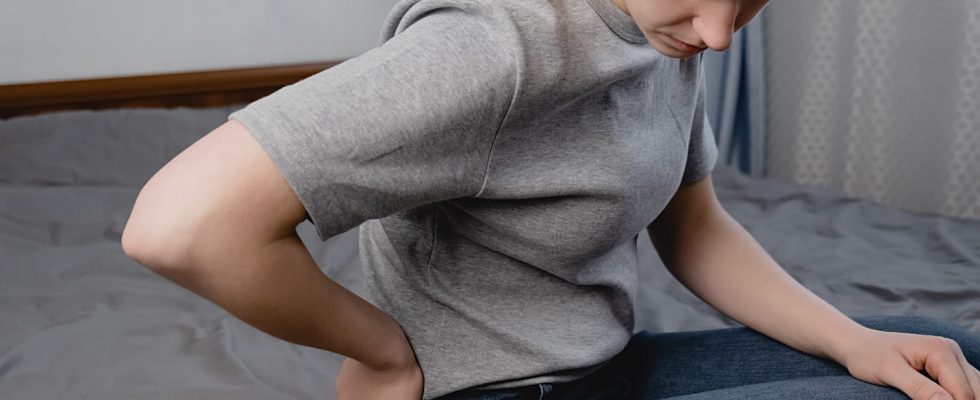A headache that doesn’t go away, pain in the neck, in the back… Sometimes the cause is not physiological but psychological. Advice from our algologist to treat this emotional pain.
Pain is a sensory and emotional experience. “All pain, particularly chronic pain, is linked to organic elements but is also modulated by emotions. If you are depressed, you may feel pain more strongly. Pain is always also emotional, that’s why it is important to reintroduce emotions into the management of thesei” indicates Professor Anne Françoise Allaz, algologist. Pain management already involves its acknowledgement : “The pain is real if the person complains about it, even in the absence of observable bodily injury” recalls Dr. Allaz. The first step in treatment through therapy is to tell the patient that we believe in his pain. “It is a necessary condition to enter the healing phase, to say “I believe you”. These people often experience medical wandering, they undergo one series of medical tests and analyses, and find themselves alone faced with results that they do not understand.” specifies the naturopath. It is a form of support for the patient who can then enter into follow-up therapy.
1. Decode the meaning of emotional pain
“To understand the causes of physical disorders, I research with patients biological decodings because an emotion is a bodily sensation above all else” notes Corinne Allemoz, naturopath. For example, chronic pain is linked to a disruption of the neurological alarm and memory system, itself impacted by emotions. “Emotions must not be neglected and on the contrary must be integrated into different pain treatments. because they contribute to the relieft” insists Dr. Allaz. In fact, chronic pain is not fixed and definitive, on the contrary it is increased or reduced depending on factors linked to affect or personal history that must be taken into consideration to tame the pain. Emotional pain therefore requires an individual response and consideration of the original factors so that “the patient regains control of his body.
2. Do group therapy
“This type of therapy is carried out over the long term, it can take years. Until the patient finds the buried cause, the trigger of the pain” notes Dr. Allaz. We can mention “group” therapy. “The work with the entourage who comes for consultation at the beginning becauseit is important that the person does not feel like a “burden” for their family and that they believe in the patient’s pain” adds Dr Allaz. “Indeed, this can be very destabilizing for those around you, you should not hesitate to ask for help from professionals“insists the algologist. Support for people suffering from emotional pain is akin to “coaching“since the support is global.”I start by performing a vitality assessment then the support will last between 6 months and 1 year depending on the needs of the people. The vitality assessment includes diet, personal history (family), life trajectories, daily habits. Next, I look for cause and effect links. Once the source has been determined, the support aims to free the person from emotional shock in order to re-establish a positive state of mind to face the next challenges of life, free of the trauma(s)” develops the naturopath. “Grief therapy may be used if the pain is caused by the trauma.” notes Corinne Allemoz.
3. Try hypnosis or meditation
Hypnosis sometimes proves very effective in supporting the patient in this process and helping them find the psychological cause of pain. There meditation helps relieve stress and/or anxiety.
4. Medication to calm pain
Emotional pain resulting in a reduction in the body’s tolerance to pain, hypersensitization, pain medication can be prescribed to relieve the patient (painkillers, antdepressants, etc.).
5. Play sports
“Physical activity secretes hormones that reduce pain and it teaches the patient to re-feel the different parts of their body, to reclaim it.” suggests Dr Alloz.
6. Relax the body by playing on temperatures
Once body tension has been identified, we can use the body techniques. “In the event of joint and/or muscle pain, we recommend learning to relax the body with techniques such as yoga, relaxation, tai chi (martial art), shiatsu etc. We then focus on the variations of temperature depending on the pain. For example, cold will relieve tendinitis while heat is indicated for osteoarthritis.” develops Corinne Allemoz. “It is essential to see things as a whole” defends the naturopath. For example, if the pain is digestive, we will go further than stomach aches but question the pace of life (stress?), diet, etc.
7. Take plants that relax
“Plants can help relieve emotional pain and in particular stress, anxiety, fatigue etc. Particularly through massages with essential oils of juniper, peppermint (migraine, digestion, etc.) or calendula (anti-inflammatory and antibacterial)” underlines the naturopath. Lavender essential oil applied locally has disinfectant, healing, relaxing and sedative properties. When inhaled, it reduces stress and anxiety.
Thanks to Professor Anne Françoise Allaz, algologist, former head of the Department of General Internal Medicine at the Faculty of Medicine of Geneva and to Corinne Allemoz, naturopath.
